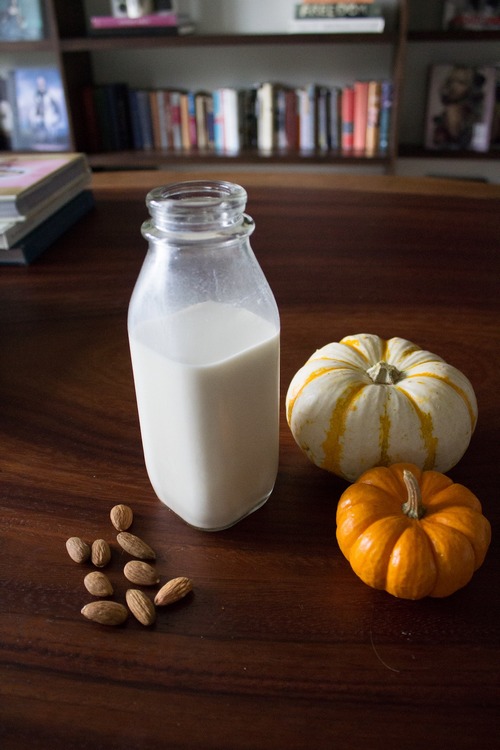Hey Ya’ll! I announced on Instagram last week that I planned to team up with my friend Kassia Fiedor from Infused Holistic Kitchen to bring you Nutrition November. Kassia is a Holistic Nutritionist, Herbalist, and Private Chef visiting Nashville from Guatemala.
We hit it off soon after she arrived, and I’m already planning my trip to Guatemala because I love this girl! This week we decided to jump in Big and choose a Hot nutrition topic, Milk. There is a big misconception in our society about milk, and we would like to help clear this up.
With the internet being such a vast source of’ information, it can be tricky to determine where you land on the issues surrounding dairy, lactose-intolerance, and milk consumption.
You will come across opinions supporting both sides of the debate on dairy consumption. Can humans consume/digest cow’s milk? This question is not so simple to answer. Perhaps the real question should be – can humans consume/digest cow’s milk that is devoid of nutrients because it has been processed, pasteurized, and re-fortified with synthetic vitamins from sick cows that have been fed an unnatural diet, antibiotics, and hormones? Since this describes a majority of the commercial milk available to us, it’s no wonder many children and adults have difficulties digesting it!
We recommend eating whole foods in their most natural state, as nature intended. In regards to dairy, this means we would prefer raw milk from pasture-fed healthy cows. Raw milk provides vital nutrients like fat-soluble vitamins A & D, calcium, vitamins B6 & B12, and is a great source of protein. Raw milk contains enzymes to help digest lactose, which pasteurization kills – hence a possible culprit for so much lactose sensitivity. In TN and other states, it is illegal for a dairy farmer to sell fresh raw milk from the farm directly to the public for human consumption.
It’s unfortunate because Pasteurization removes the essential nutrients and compounds that are beneficial to the human body, so the milk bought in the grocery store has been fortified with vitamin D and other vital nutrients to be beneficial. For kids who are lactose sensitive, we recommend fermenting or culturing milk which makes it more digestible and probiotic-rich. That means yogurt, crème fraiche, kefir, or some cheeses might be easier for kids to digest. For kids who are not lactose sensitive, we recommend buying organic whole milk from cows who have not been treated with hormones and antibiotics and fed a natural diet of grass. Whole Milk has more vitamin D and Fat for brain and nerve development than low-fat or skim milk.
If you know you or your child are indeed lactose intolerant, or you have made an ethical decision to avoid dairy, homemade or store-bought nut milks are a great alternative! Nut milks combined with whole foods can provide your Kids with all the nutrients they need to grow strong and healthy. We would like to debunk the myth that kids can only get calcium from milk – greens, dried figs, nuts, seeds, beans, and chia are great sources, too. As for vitamin D, fatty fish, egg yolks, coconut milk, and 15 minutes in the sun provide a healthy dose. Sweet potatoes, oranges, carrots, and eggs contain vitamin A. The key is variety – start your kids early on eating the rainbow, and they will get balanced nutrition.
Our favorite nut milk is almond milk because it is slightly higher in protein, but you can use this recipe with any nut or seed – cashews, macadamias, brazil nuts, hempseeds, sunflower seeds, etc. Always soak the nuts overnight for at least 6 hours! All nuts with skin contain enzyme inhibitors which make them hard to digest, so soaking neutralizes these enzymes allowing for ease of digestion and release of vital nutrients.

Almond Milk Recipe
1 cup almonds – soaked overnight 6-8 hours and drained
3-4 cups filtered water (depending on how rich you like the milk)
½ tsp cinnamon (optional)
1 date or 1 tbsp honey (optional)
pinch Himalayan salt
Rinse soaked almonds, and add all above ingredients to a blender. After blending well, strain the milk through a cheesecloth. Store in a sealed container in the fridge for up to 3 days. Enjoy!
Note from Virginia: Lilah was born with a dairy sensitivity which caused her stomach pains and blood in her stool. As she got older, I was encouraged regularly by her physician to try to add milk back into her diet. When I did, she got eczema and other skin allergies. This frustrated me, so I did enough research to feel confident that Lilah did not need milk in her diet and that most likely she would be healthier without it. I found other ways to provide her with the nutrients she needed to stay healthy. Lilah is three and has never been given milk. She is a very healthy child, I can count on one hand how many times she’s been sick. She eats a variety of whole foods and I give her either homemade almond milk or fortified almond milk from https://silk.com/products
I like Silk because it has added Vitamin D, and actually, has more calcium than regular milk. You decide what’s best for your child, but I thought it was important to give you alternatives in case your child has a sensitivity. And know Moms, I support you in any decision you make!



